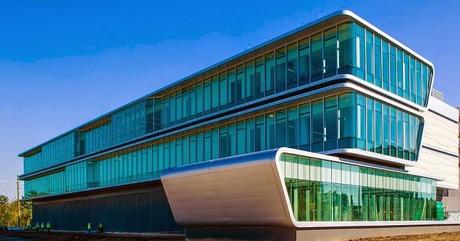
The United States Energy Department’s National Renewable Energy Laboratory (NREL) has developed a unique software application that could improve the efficiency of commercial buildings--as it provides accessibility for occupants to interact with buildings more directly.
NREL Press Release reads:
The new Building Agent (BA) application allows facility managers to quickly diagnose and adjust for problems based on direct occupant comfort feedback. Occupants are able to share this feedback via the application dashboard on their desktop computers. With 25% of a building’s energy performance directly related to occupant behavior, this capability can result in a significant step toward helping buildings become more cost effective and energy efficient.
“This goes beyond the kinds of energy dashboards that facility managers might be familiar with,” NREL Senior Engineer Larry Brackney said. “By integrating comfort feedback with traditional measurements, BA ties the notions of comfort and energy performance together in a way that no other application has done. Building occupants become an active part of the comfort and energy tradeoff along with the facility managers.”
Additionally, the application provides aggregated data on electric energy, thermal energy, internal temperatures, humidity and lighting levels.
The BA tool has four key layers : hardware, databases, visualizations and applications. Based on both modeled and measured data, BA provides intuitive visualizations of energy use and comfort, which are critical for establishing building performance relative to expectations. These capabilities help facility managers and occupants understand the overall comfort and energy performance for an entire building. By presenting data in context to what the building or system should be doing at any given time, BA provides facility managers with the information needed to locate problems and make knowledge-based decisions quickly for improved building performance.
As a research tool, BA provides a better understanding of the occupant acceptance of energy efficiency measures and how typical design practices need to be improved to produce low-energy buildings. The application is already in use in several buildings on the NREL campus and a version of BA is deployed at the Marine Corps Air Station in Miramar, California, to conduct an electrochromic window comfort assessment. Electrochromic windows tint automatically to reduce solar heat gain, which can eliminate the need for window shades and potentially reduce cooling load.
“The feedback we get from BA will help to evaluate acceptance of the technology and fine tune control sequences,” NREL Engineer Jennifer Scheib said. “This information will be important going forward as energy efficiency features are considered for the design of new facilities as well as in office building retrofits.”
The savings potential of using BA will be seen in the reduction of annual energy use and peak demand. BA provides feedback on actual versus expected energy use for each building system, and during peak demand times, occupants can be urged to take direct actions, such as setting computers to hibernation mode before leaving for a meeting. BA enables an ongoing conversation between occupants, facility managers and the building for sustained efficiency.
Credits:
NREL is the U.S. Department of Energy's primary national laboratory for renewable energy and energy efficiency research and development. NREL is operated for DOE by The Alliance for Sustainable Energy, LLC.
Press Release Source + Image
